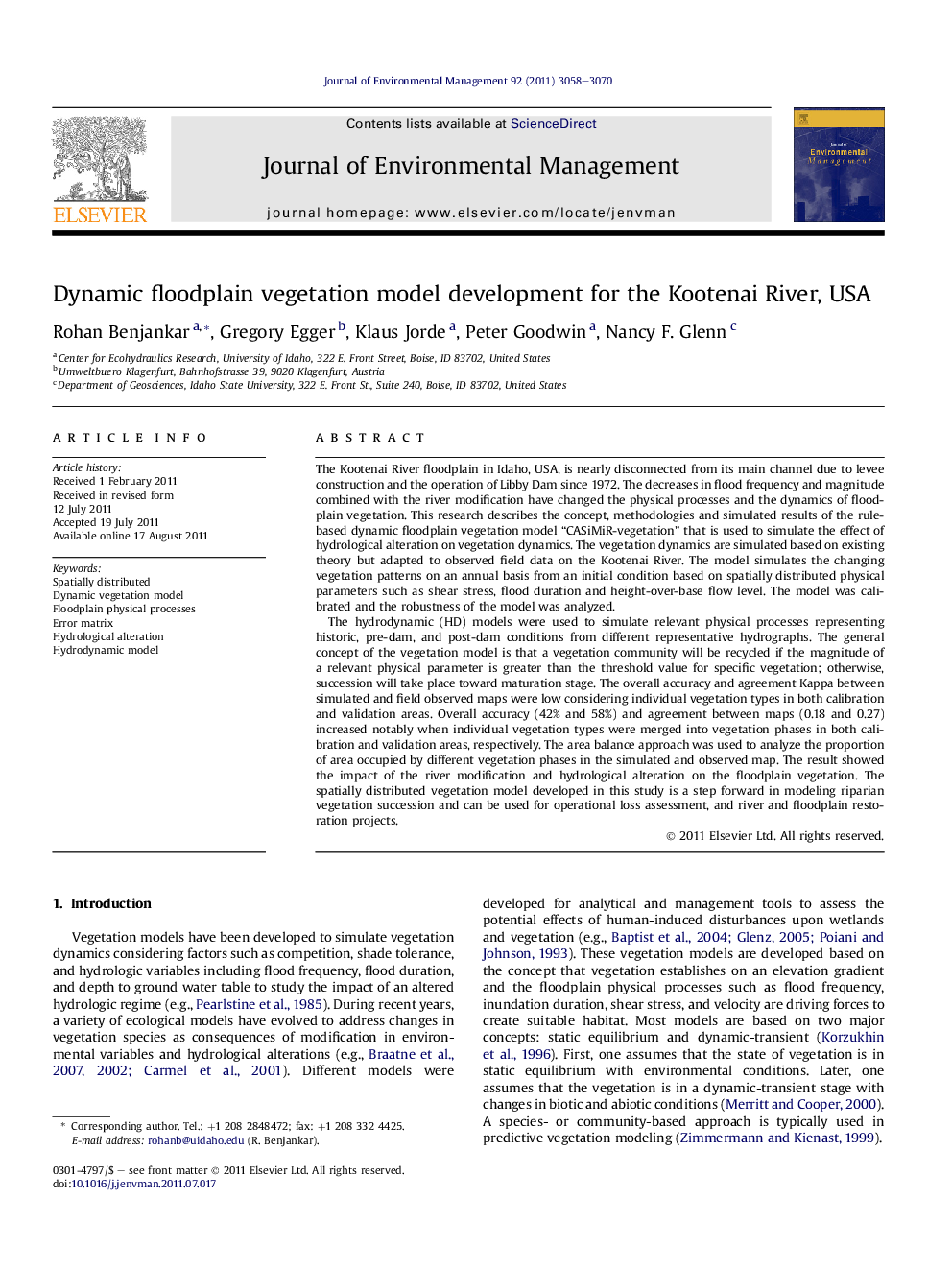| کد مقاله | کد نشریه | سال انتشار | مقاله انگلیسی | نسخه تمام متن |
|---|---|---|---|---|
| 1057109 | 947060 | 2011 | 13 صفحه PDF | دانلود رایگان |

The Kootenai River floodplain in Idaho, USA, is nearly disconnected from its main channel due to levee construction and the operation of Libby Dam since 1972. The decreases in flood frequency and magnitude combined with the river modification have changed the physical processes and the dynamics of floodplain vegetation. This research describes the concept, methodologies and simulated results of the rule-based dynamic floodplain vegetation model “CASiMiR-vegetation” that is used to simulate the effect of hydrological alteration on vegetation dynamics. The vegetation dynamics are simulated based on existing theory but adapted to observed field data on the Kootenai River. The model simulates the changing vegetation patterns on an annual basis from an initial condition based on spatially distributed physical parameters such as shear stress, flood duration and height-over-base flow level. The model was calibrated and the robustness of the model was analyzed.The hydrodynamic (HD) models were used to simulate relevant physical processes representing historic, pre-dam, and post-dam conditions from different representative hydrographs. The general concept of the vegetation model is that a vegetation community will be recycled if the magnitude of a relevant physical parameter is greater than the threshold value for specific vegetation; otherwise, succession will take place toward maturation stage. The overall accuracy and agreement Kappa between simulated and field observed maps were low considering individual vegetation types in both calibration and validation areas. Overall accuracy (42% and 58%) and agreement between maps (0.18 and 0.27) increased notably when individual vegetation types were merged into vegetation phases in both calibration and validation areas, respectively. The area balance approach was used to analyze the proportion of area occupied by different vegetation phases in the simulated and observed map. The result showed the impact of the river modification and hydrological alteration on the floodplain vegetation. The spatially distributed vegetation model developed in this study is a step forward in modeling riparian vegetation succession and can be used for operational loss assessment, and river and floodplain restoration projects.
► Two-dimensional hydrodynamic model used to simulate relevant physical processes.
► Physical processes are driving factor for spatially distributed vegetation model.
► Simulation of dynamic succession of floodplain and riparian vegetation.
► Tool to analyze impact of river modification and dam operation on ecosystem.
► Tool to use in river and floodplain restoration projects.
Journal: Journal of Environmental Management - Volume 92, Issue 12, December 2011, Pages 3058–3070